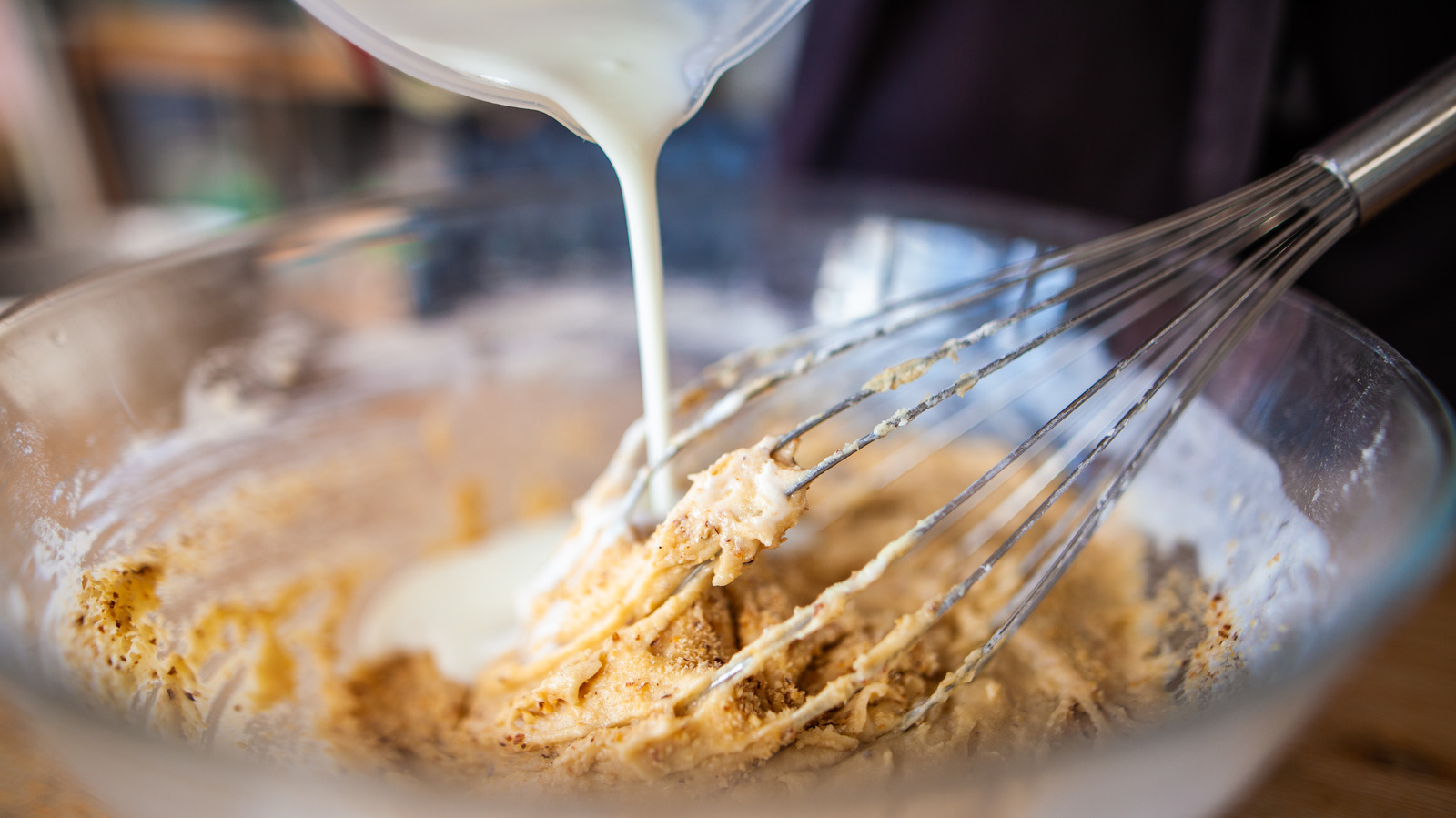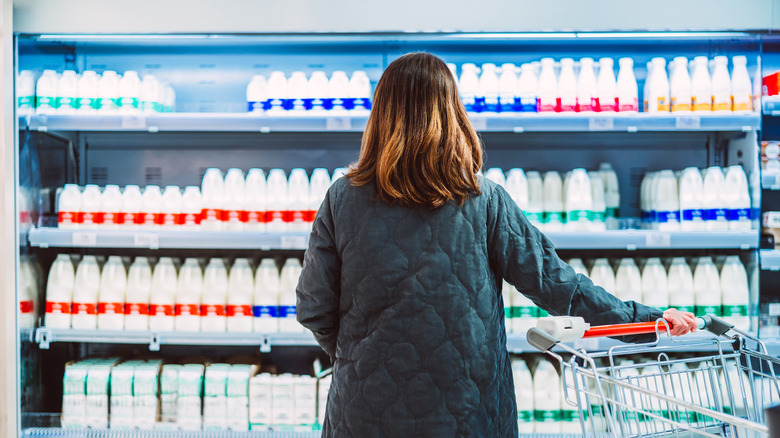Milk is a crucial component in baking. The ingredient features heavily in desserts like bread pudding, tres leches cakes, and fluffy rhubarb and cardamom oat muffins. Plus, what’s a gooey chocolate chip cookie without a chilled glass of milk for dunking? You can even bake fresh bread with your expired milk. Among its many functions, milk contributes moisture, adds flavor, boosts texture and gives crusts that golden brown hue. When it comes to baking with milk, how much does fat content matter?
In many cases, you can swap out dairy milk with one of a different milk fat percentage. However, the substitution can have a noticeable effect on your final product. Typically, the more fat a milk possesses, the more moisture it will add to your baked goods. This means if a recipe calls for whole milk, you usually can grab the 1% in your fridge, but you might be sacrificing richness and texture.
How to choose the right milk for baking
Milk fat content is reflected in the percentages plastered across dairy containers like 1%, 2%, “whole” milk, and skim. These quantities refer to the amount of fat in the product by weight. Whole milk, or regular milk, is not made up of 100% milk fat, but rather contains somewhere between 3.25% and 3.5% milk fat or 8 grams per serving – this most closely resembles the milk directly from the cow. On the other hand, 2% milk contains 5 grams of milk fat per serving, 1% contains 2.5 grams, and skim milk contains zero. Regardless of milk fat, all dairy milk is also rich in protein. This protein helps support the structure of breads and other baked goods.
If you’re partial to oat milk in your daily latte, you can also bake with dairy substitutes; it’s all about choosing the right plant-based milk for baking. Soy is usually the preferred alternative because of its high protein content.





